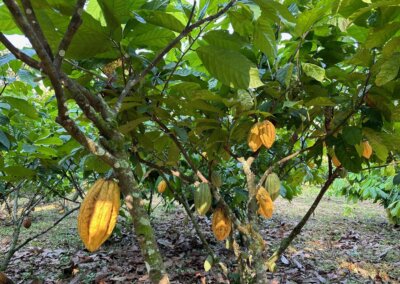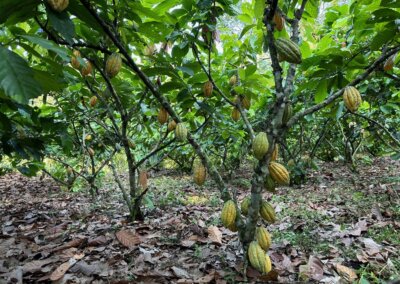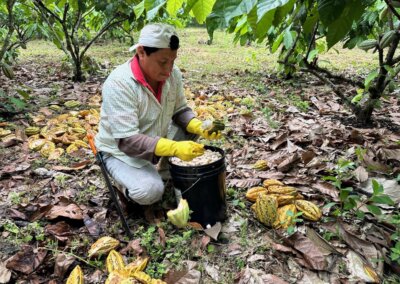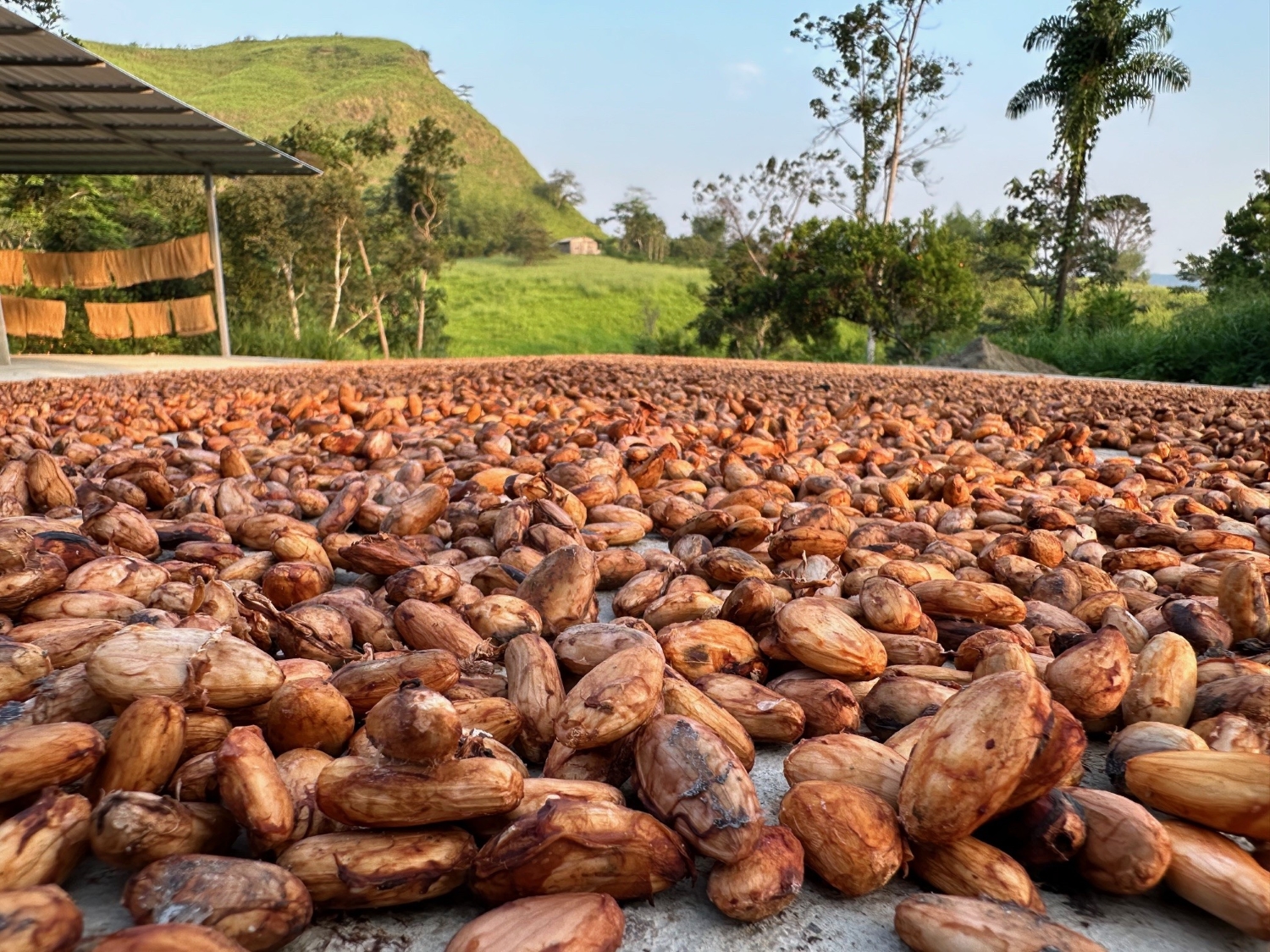Organic Cacao from Mixed Culture
Our company philosophy is also noticeable in our organic cacao project at all times. The aim is not only to produce a food product, but at the same time to achieve as much positive effect as possible. Here too, the promotion of biodiversity is a central aspect of a sustainable concept. Equally important to us is to show the local population the advantages and importance of responsible production.
Growing cacao was never really our intention. But chance would have it that on our first piece of land, the Finca Armadillo, over 5 hectares of fine flavoured cacao had already been cultivated many years before. The enthusiasm for this wonderful fruit motivated us to plant another 9 hectares of fine flavoured cacao next to the still existing secondary forest, which is why we now actively cultivate 17 hectares of organic cacao.
It grows in a mixed culture with many other fruits and trees. In addition to several native species of wood and guadua bamboo, among our cacao you will find numerous tangerine and orange trees, various varieties of bananas, papaya, tagua, coffee, passion fruit, guaba (inga), guanábana (spiky annone), guayaba (guava), avocado and much more. The challenges in organic cultivation are great, but we are taking this path out of conviction. Our next goal is organic certification.
History Cacao
The cacao plant has its origin in the Amazon region. As a crop, it was cultivated by the indigenous peoples of Mexico, the Mayas and Aztecs, more than 2,000 years ago. It was them who turned the cacao into a bitter-hot drink called “Xocalatl”. Brought to Europe by the Spaniards in the 15th century, cacao had developed into a luxury drink in the 17th century through the addition of sugar. Today cacao is grown on all continents with a tropical climate. The quantitatively leading countries in terms of cultivation are the Ivory Coast and Ghana. Ecuador follows in fifth place.
Ecuadorian Fine Cacao
Ecuador is the largest producer of fine flavoured cacao, which accounts for 75% of the cacao grown. The Ecuadorian fine flavoured cacao variety “Arriba”, also known in the country as “Nacional” or “Aroma fino”, is famous for its long and intense cacao aroma. Of course, we also focus on quality and grow exclusively organic fine flavoured cacao.
You can still find wild growing cacao trees in the rainforest of Ecuador. In its wild form, the cacao tree grows to a height of 8 m. In commercial cultivation, however, the growth height is kept much lower to allow for an efficient harvest. The cacao tree produces its flowers and fruits directly on the trunk and on the large branches. The 15 to 25 cm large fruits contain 20 to 60 cacao beans. These are surrounded by a white, tasty pulp and are 1 to 2 cm long.
Offer
As our harvest volumes were still small until recently, we have been selling them locally until now. Due to the current significant increase in cocoa volumes, we would like to export them in the future directly if possible. In addition, we are currently clarifying the process for organic certification.
We are already looking forward to the first bags of cacao beans, which we will sell directly to buyers in Europe or elsewhere. If you are interested, we look forward to hearing from you.









